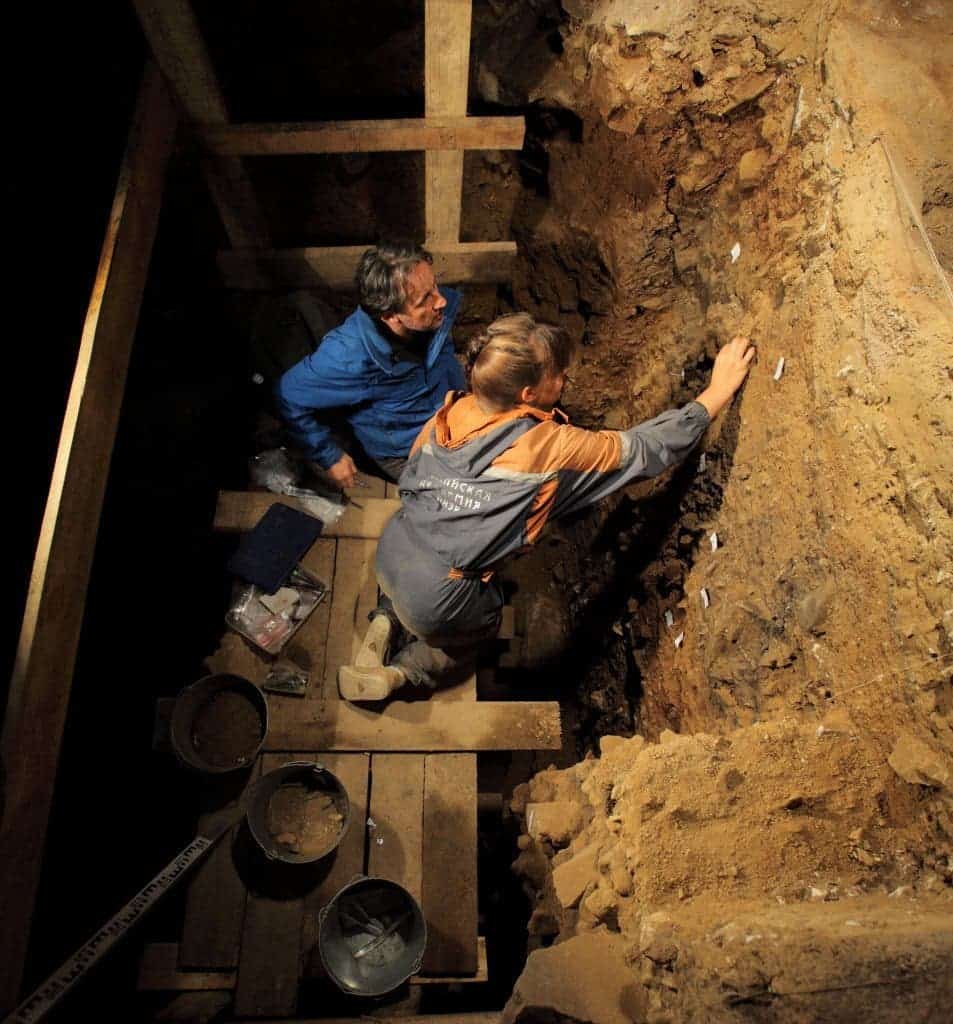The Denisovans were, anthropologically speaking, our cousins. They shared a common origin with Neanderthals and ranged from Siberia to Southeast Asia. They lived along with humans, interbreeding with them on multiple occasions. However, we’ve only found direct evidence of their existence in a cave called Denisova. Now, researchers have detailed the timeline of that cave’s occupation.

Image credits: Sergey Zelinski, Russian Academy of Sciences
In the lush but cold forests of the Altai Mountains in Siberia, there lies a unique cave. You might not think too much of it seeing it from the outside, but its inside hosts some of the greatest anthropological finds of all time.
The Denisovans were a hominin species whose fossils are known only from a few fragments of bone and teeth unearthed in the Denisova Cave. The excavations and subsequent studies have already provided many insights into this population, but the complex and intricate cave has made it difficult to map the entire timeline of the occupation.
Now, two new papers published in Nature analyze that timeline and provide us with a general picture of the cave’s history.
“Denisova Cave, uniquely, contains stratified deposits that preserve skeletal and genetic evidence of both hominins, artefacts made from stone and other materials, and a range of animal and plant remains,” write Zenobia Jacobs, Richard Roberts, and colleagues, who authored the first paper. “Here, we describe the stratigraphic sequences in Denisova Cave, establish a chronology for the Pleistocene deposits and associated remains from optical dating of the cave sediments, and reconstruct the environmental context of hominin occupation of the site from around 300,000 to 20,000 years ago,” they continue.

Image Credits: Erich Fisher.
The optical dating they refer to works by estimating how much time has passed since specific mineral grains (most notably quartz) were last exposed to light. This would correspond to the period when the minerals were brought into the cave. Overall, the authors analyzed the remains of 27 species of large vertebrate, 100 species of small vertebrate (such as mammals and fishes) and 72 species of plant.
Using this method, they found that Denisovans occupied the cave approximately 287,000 to 55,000 years ago. They also confirmed that the cave housed not only Denisovans, but also Neanderthals, who were in the cave from 193,000 to 97,000 years ago. This means that there’s a long period of time where both Denisovans and Neanderthals occupied the cave.

In an accompanying News&Views article also published in Nature, prehistoric archaeologist Robin Dennell, who was not involved in the study, comments:
“Although there might still be some uncertainty about the detailed ages of the remains — given the nature and complexity of the deposits and the dating methods used — the general picture is now clear. Deposition of sediment deposits at Denisova was episodic but [..] the site was occupied by Denisovans and by Neanderthals in both cold and warm periods from approximately 200,000 to 50,000 years ago.”
In a separate paper, Oxford’s Katerina Douka and colleagues present three new fossil fragments, as well as new radiocarbon dates of Denisovan bone, and artifacts also made from bone. Based on the distribution and dating of Denisovan fossils, they conclude that the population inhabited the cave since at least 195,000 years ago. Notably, carbon dating of bone points and tooth pendants indicate an age of 43-49,000 years old, which would make them the oldest artifacts ever unearthed in northern Eurasia. Although this is sti uncear, there’s also a good chance that these artifacts were crafted by the Denisovans.
We are just scratching the surface of who the Denisovans were, researchers emphasize.
“There is still much to learn from Denisova. The work by Douka, Jacobs and their respective colleagues creates an important foundation for such efforts by providing a rigorous and compelling timeline for the cave sediments and its contents,” Donnell concludes.
Journal Reference:
- Jacobs et al. “Timing of archaic hominin occupation of Denisova Cave in southern Siberia.” Nature, DOI: 10.1038/s41586-018-0843-2.
- Douka et al. “Age estimates for hominin fossils and the onset of the Upper Palaeolithic at Denisova Cave.” Nature, DOI: 10.1038/s41586-018-0870-z.


